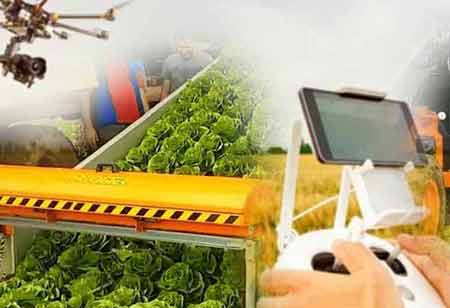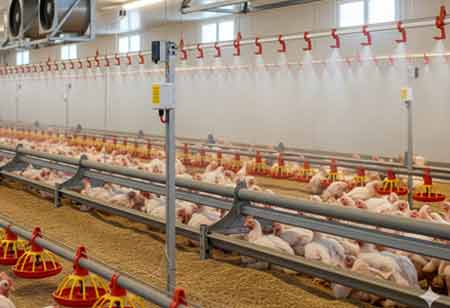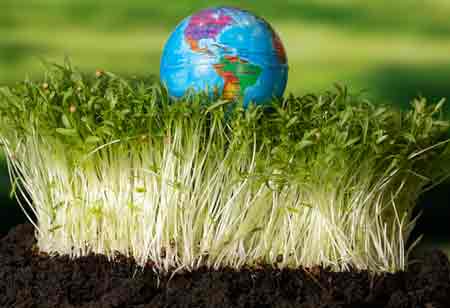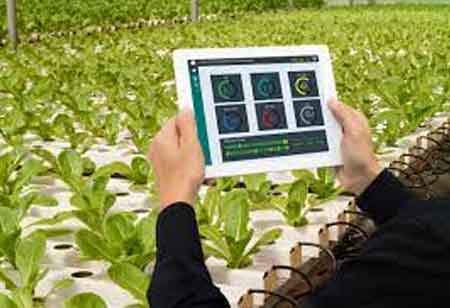Thank you for Subscribing to Agri Business Review Weekly Brief
How to Apply Location Technology in Agriculture
The food is good. But how far more of it can we generate without doing more harm to the environment?

By
Agri Business Review | Tuesday, October 11, 2022
Stay ahead of the industry with exclusive feature stories on the top companies, expert insights and the latest news delivered straight to your inbox. Subscribe today.
Digital agriculture is a fusion of data and algorithms that provide specific recommendations for every square meter of a field.
FREMONT, CA: The food is good. But how far more of it can we generate without doing more harm to the environment? To feed the future population continuously, farmers will want to grow at least 70% more crops within the next 30 years. Purchasing more shovels or another tractor won’t solve this challenge. But unconventional approaches like sending drones to monitor fields, and using sensors for soil analysis, other precision agriculture technologies can.
Let’s consider how modern technologies vary the agricultural landscape and how early adopters of precision agriculture practices are already collecting the advantages.
What is digital agriculture?: Growing food may be one of the ancient activities on earth. But it’s still liable to technological disruption. The expanded use of technology for precision farming in agriculture is geared toward finding new ways to increase the sustainability of food production.
Digital agriculture is a fusion of data and algorithms that provide specific recommendations for every square meter of a field.
Use of drones for more efficient farming
Drones represent one of the latest applications of GPS in agriculture. By creating pre-planned routes, farmers can forward UAVs to record important metrics as frequently as needed:
• NDVI (Normalized Difference Vegetation Index) data shows plant health and helps farmers measure overall biomass at a scale
• GPS coordinates of fields and extra points of interest (pest-affected areas, dry or under-irrigated patches of land, etc.)
• Nitrogen levels in the soil
Bonus point: UAVs outfitted with thermal sensors can also turn into smart herders, capturing data regarding livestock and informing a farmer if any animals are missing, injured, or giving birth.
Camera and sensor-equipped drones can catch geo-information with greater accuracy and precision than human teams. All this data can then be converted into the following:
• an exact map of crops, routinely updated with fresh information post-drone deployment – get a birds-eye view of your land by observing at a tablet, not by doing foot examinations all day long;
• New forecasts and discernments into soil quality, probable crop yields, and overall crop health.
Drones have also been exhibited to be effective in water conservation and irrigation. For example, models with thermal sensors can quickly detect leaks or breaks in irrigation systems and determine if crops are getting the right water.
A drone can screen a thousand acres in an hour-long flight. It would take a farmworker exceeding a week to inflate and down the same orchards in an all-terrain vehicle seeking chewed irrigation lines.
IoT sensors on the ground & in farm equipment: Automation is not new to farming. But the IoTs reveal a brave new era of precision agriculture technology.
Precision agriculture is a general term for all the digital services and technological inventions modern farmers use to optimize yields, decrease waste, and maintain environmental quality.
IoT sensors placed in fields can support farmers in determining the following:
• the right distribution of fertilizers and pesticides
• crop health
• moisture levels & soil quality
• temperature, light, and humidity levels in greenhouses
• optimal harvest time
The normal farm will produce an average of 4.1 million data points per day in 2050.
Business Insider: The new wave of precision agriculture technology allows farmers to collect advanced soil analytics that improves decision-making and automation. For example, cultivation data can be transmitted to smart irrigation systems that automatically adapt their performance to feed each plant based on its needs. Or that data can be shared with ag robots – autonomous robots capable of tackling daunting manual tasks with precision. For example, agrobots can be deployed for hyper-local fertilizer placement, reducing fertilizer consumption by 99.9%.
The adoption of GIS in agriculture is another major trend in precision farming. GIS technology is used for spatial analysis and visual representation of land. Utilizing geodata from public and proprietary data sources (or data captured by drones and sensors) and big data in agriculture, you can examine soil amendments, identify erosion at early stages, and more faithfully estimate crop yields.
By counting weather data to the mix, you can project present and future variations in temperature and precipitation and their impact on yields. Moreover, you can conduct comprehensive risk assessments to protect your business against floods, droughts, erosion, and wildfires.





